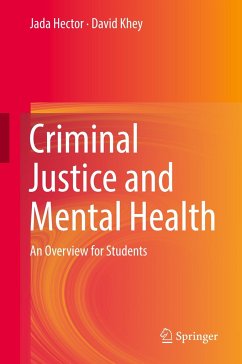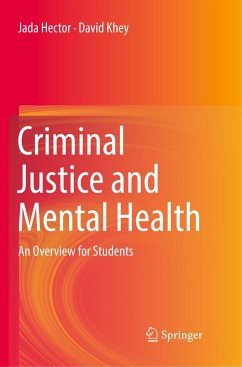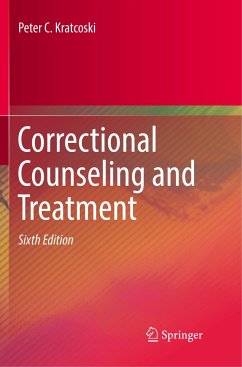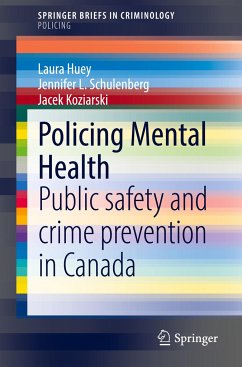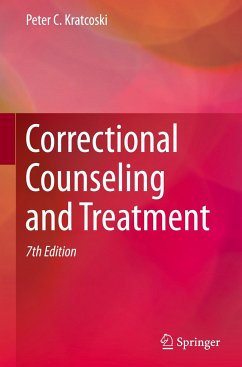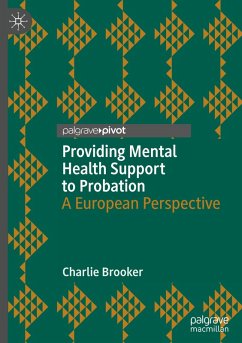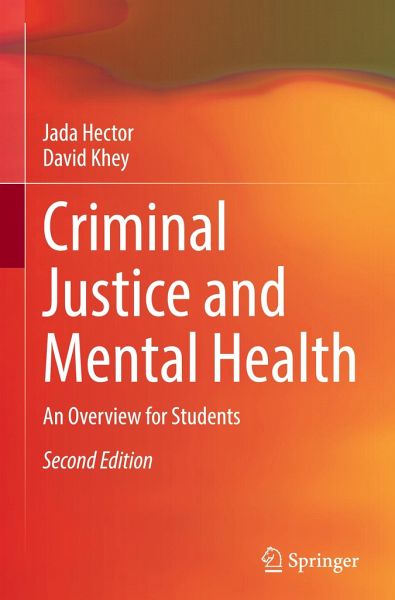
Criminal Justice and Mental Health
An Overview for Students
Versandkostenfrei!
Versandfertig in 6-10 Tagen
42,99 €
inkl. MwSt.
Weitere Ausgaben:

PAYBACK Punkte
21 °P sammeln!
This textbook provides an overview of the overlap between the criminal justice system and mental health for students of criminology and criminal justice. It provides an accessible overview of basic signs and symptoms of major mental illnesses and size of scope of justice-involved individuals with mental illness.In the United States, the law enforcement and the criminal justice system is often the first public service to be in contact with individuals suffering from mental illness or in mental distress. Those with untreated mental illnesses are often at higher risk for committing criminal acts,...
This textbook provides an overview of the overlap between the criminal justice system and mental health for students of criminology and criminal justice. It provides an accessible overview of basic signs and symptoms of major mental illnesses and size of scope of justice-involved individuals with mental illness.
In the United States, the law enforcement and the criminal justice system is often the first public service to be in contact with individuals suffering from mental illness or in mental distress. Those with untreated mental illnesses are often at higher risk for committing criminal acts, and due to a lack of mental health facilities, resources, and pervasive misconceptions about this population, those with mental illness often end up in the corrections system. This timely work covers the roles of each part of the criminal justice system interacting with mentally ill individuals, from law enforcement and first responders, social services, public health services, sentencing and corrections, to release and re-entry. It also addresses the crucial need of mental healthcare for criminal justice professionals, who suffer from high rates of job stress, PTSD, and other mental health issues.
With new chapters on stigma, mental illness during and after disaster and crisis, and updates and new supplementary materials throughout, this book will be of interest to students of criminology and criminal justice, sociology, psychology, and public health. It will also be of interest to policy-makers and practitioners already working in the field, interacting with and addressing the needs of mentally ill individuals.
In the United States, the law enforcement and the criminal justice system is often the first public service to be in contact with individuals suffering from mental illness or in mental distress. Those with untreated mental illnesses are often at higher risk for committing criminal acts, and due to a lack of mental health facilities, resources, and pervasive misconceptions about this population, those with mental illness often end up in the corrections system. This timely work covers the roles of each part of the criminal justice system interacting with mentally ill individuals, from law enforcement and first responders, social services, public health services, sentencing and corrections, to release and re-entry. It also addresses the crucial need of mental healthcare for criminal justice professionals, who suffer from high rates of job stress, PTSD, and other mental health issues.
With new chapters on stigma, mental illness during and after disaster and crisis, and updates and new supplementary materials throughout, this book will be of interest to students of criminology and criminal justice, sociology, psychology, and public health. It will also be of interest to policy-makers and practitioners already working in the field, interacting with and addressing the needs of mentally ill individuals.




